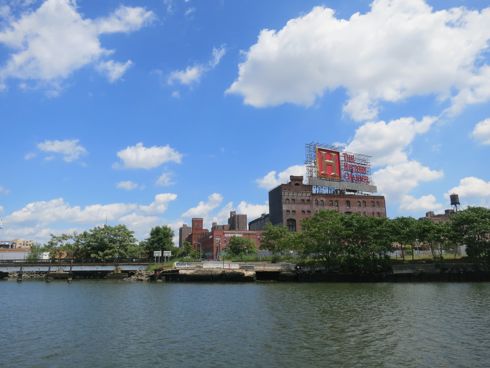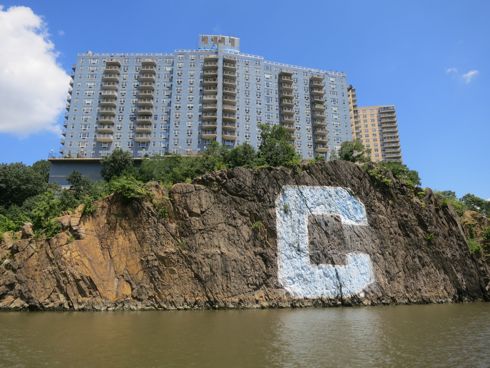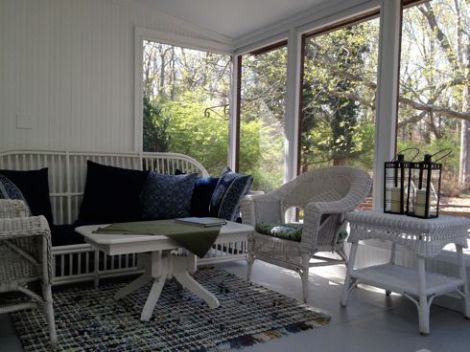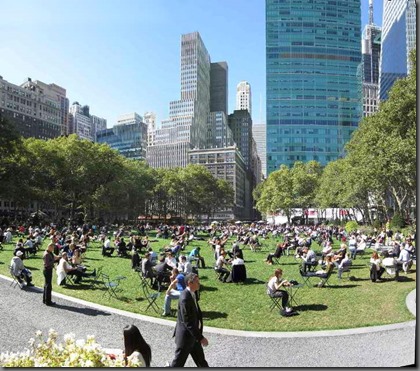
I LEARNED MANY NEW THINGS on Classic Harbor Line‘s architecture-focused “Around Manhattan Now” cruise last Friday, and was reminded of others I once knew but had forgotten. For example: the Statue of Liberty never gets old.

She just doesn’t. Every time you see her, no matter how frequently, your heart leaps a little. Especially from the deck of a mahogany-trimmed 1920s-style yacht, with a mimosa in hand.
A seafarer I am not, but the trip was smooth, exhilarating, and overall a class act. It didn’t hurt that the day was perfection, the skyline crowned blue with cartoon clouds. We embarked on the luxury yacht Manhattan at Chelsea Piers on West 22nd Street, and for the next three hours, American Institute of Architects docent Arthur Platt provided non-stop narration, emphasizing what’s new — and there is plenty — on the waterfronts of Manhattan, Brooklyn, Queens, the Bronx, New Jersey, Governor’s and Roosevelt Islands.


The Manhattan is one of five boats, all replicas of vintage vessels, including two schooners — the Adirondack, above, and the America — and two smaller, more intimate motorized yachts, the Beacon and the Kingston. There’s a full slate of cruises, some narrated, some not — including a specialized infrastructure tour just for bridge nerds- – 7 swing bridges! 3 lift bridges! 4 arch bridges! — and the boats are available for private charters as well. Lest you think I’m shilling for Classic Harbor Lines because my daughter works for them as a crew member on several of their vessels, know that my enthusiasm is shared by many others.
I began in the cabin of the Manhattan, lured indoors by the plush atmosphere and air conditioning, and took my first photo through a window, below, of the Empire State Building, Jean Nouvel’s modernistic 100 Eleventh Avenue, and the mesh screen of the Chelsea Piers golf driving range, as we pulled away from the dock. Then I ran out to the deck and stayed there for the remainder of the cruise, trying to follow the rapid-fire narration as Arthur pointed out buildings of interest on all shores. The boat moved fast, and it was hard to take in all the images and information as we steamed along (though we did linger pleasantly for a while at Liberty Island, and again in the Harlem River, waiting for the Spuyten Duyvil Bridge to open and allow us back into the Hudson).


Soon we were out in mid-river, above, gazing back upon the city, and being struck once more by its monumentality.

The Chelsea High Line — a mile-long public garden planted atop a once-derelict stretch of elevated railway — and the related explosion of new construction around it, streamed past on the West Side, above.

Above, Richard Meier’s Perry Street towers were among the first modern buildings in the West Village, and remain among the few.

Cruising past SoHo, Arthur treated us to the unsavory details of Donald Trump’s machinations to get the city to allow him to build an out-of-scale glass tower on Spring Street, above, claiming it would be a hotel, then selling the “suites” as apartments.

Goodbye to Midtown, above, as we headed south on the Hudson…

Hello to Downtown, above — Battery Park City, the curved facade of 200 West Street (Goldman Sacks) by Pei Cobb Freed Adamson, and the new Freedom Tower (now apparently called World Trade Center), helping make up for the loss of the Twin Towers and making lower Manhattan look almost normal again.

I marveled at how good Jersey City, above, is looking these days…

and wondered when Ellis Island, that great Victorian pile, and its immigration museum will reopen (it’s been closed since Sandy).
We sidled along Governor’s Island, but the piles of rubble along the waterfront were not picturesque enough for my camera (they are demolishing old Coast Guard barracks, and there are great plans for new landscaping in the works). We rounded Battery Park and entered the East River, below…



appreciating the distinctive yellow William Beaver building by Tsao & McKown, above, like a splash of sunlight in the canyons of the Financial District.


I felt sad seeing the hulk of South Street Seaport, abandoned since Sandy. Supposedly it’s to be replaced with something altogether different and hopefully more successful, but that all seems uncertain and wasn’t it only about thirty years old anyway?

Frank Gehry’s 8 Spruce Street, with its innovative wavy facade, above, out-marvels the once-marvelous, century-old Woolworth Building, briefly the tallest in the world.


Above, another ageless icon that needs no naming…

and a close-up of Jane’s Carousel at Brooklyn Bridge Park, a restored vintage merry-go-round in its ultra-modern Jean Nouvel housing.

In short order, we’re passing under the Manhattan Bridge, above, and alongside the revitalized-at-lightning speed DUMBO neighborhood…

then looking back toward those two bridges, near-age siblings (1883 and 1903, respectively), as we steamed north.

Here comes the Williamsburg Bridge, above…

hard by the now-closed Domino Sugar factory, soon to be converted to glitzy residential units by SHoP Architects.

I’m skipping (for blog purposes) the dull visuals of Stuyvesant Town and Peter Cooper Village on the East Side of Manhattan. Above, the ever-inspiring Chrysler Building and the 1950s UN Headquarters, sparkling and stunning after its recent refurbishment.

We pass under another of New York’s monumental bridgeworks — the Queensboro/59th Street Bridge, in whose shadow I spent my early childhood (though you can’t see my old Long Island City neighborhood from here because of subsequent massive building on Roosevelt Island, below).

Happily, the Pepsi sign is landmarked…


Plenty of new apartments to go around on Roosevelt Island, above, it would seem. There’s also the husk of a Victorian hospital, below, which I explored with two college friends in the late 1960s, finding unspeakable things in jars. Why it has not been demolished, I can’t tell you. [NOTE: These photos are a little out of order]

We’re now in the upper East River, heading toward the Bronx. Below, part of the Upper East Side of Manhattan…

and the Triborough Bridge, below, evocatively named for its construction linking the Bronx, Queens, and Manhattan (but recently and pointlessly renamed the Robert F. Kennedy Bridge, which pisses me off).

Now we’re in the narrower Harlem River, below, between upper Manhattan and the Bronx, passing such landmarks as Yankee Stadium and the Tuckitaway Storage company, which Arthur mentions (twice) as an example of how businesses and people were forced out of Manhattan and into the Bronx when parts of the former were reassigned to the later — and how they resented it.

The turret, below, belongs to the Third Avenue rotation bridge, one of 13 (!) bridges linking Manhattan and the Bronx. I love the old curlicued cast iron light post, and the fact that it remains.

Below, the Peter J. Sharp Boathouse by Robert A.M. Stern…

And the embankment, below, where Columbia University graduates should feel a swell of pride.


Above, a surprisingly natural marshy cove in the Inwood section of upper Manhattan, with a recently installed floating art piece made of discarded umbrellas…

and Washington Bridge, another of the of 13 mostly walkable bridges across the Harlem River.

Finally we reach the Spuyten Duyvil (“spouting devil” in Dutch, as this is where the waters of the Hudson and Harlem Rivers meet, their different tides and compositions creating a treacherous whirlpool). The captain of the Manhattan called for the bridge to be manually opened for us, giving us time to catch our breaths before…

entering the wide waters of the Hudson River.

The change of direction got people up into the bow with their cameras as the George Washington Bridge approached…

its little red lighthouse still standing proud, saved when threatened with demolition in the 1930s by its children’s book fame.

We cruised past Grant’s Tomb, Riverside Church, and the classic, elegant apartment buildings of the old Upper West Side, above…

which transitioned rapidly to the glassy towers of the new West Side, south of 72nd Street.

Above, a place I’d like to go for lunch one summer day, whose name I didn’t catch…

and the fabulous, shiplike Starrett-Lehigh Building on West 26th Street, an Art Deco monument that now houses Martha Stewart Omnimedia and other design-oriented companies.
Shortly thereafter, we disembarked at Chelsea Piers, exhausted from the sun and the wind and just being out on the water. Though I hadn’t actually done anything but run from one side of the boat to the other, snapping unsteady pictures of just a few of the 156 sites on the map we were given, I slept very well that night.
Since then, I’ve realized anew that New York is more than merely a city. It’s a civilization.
























































































